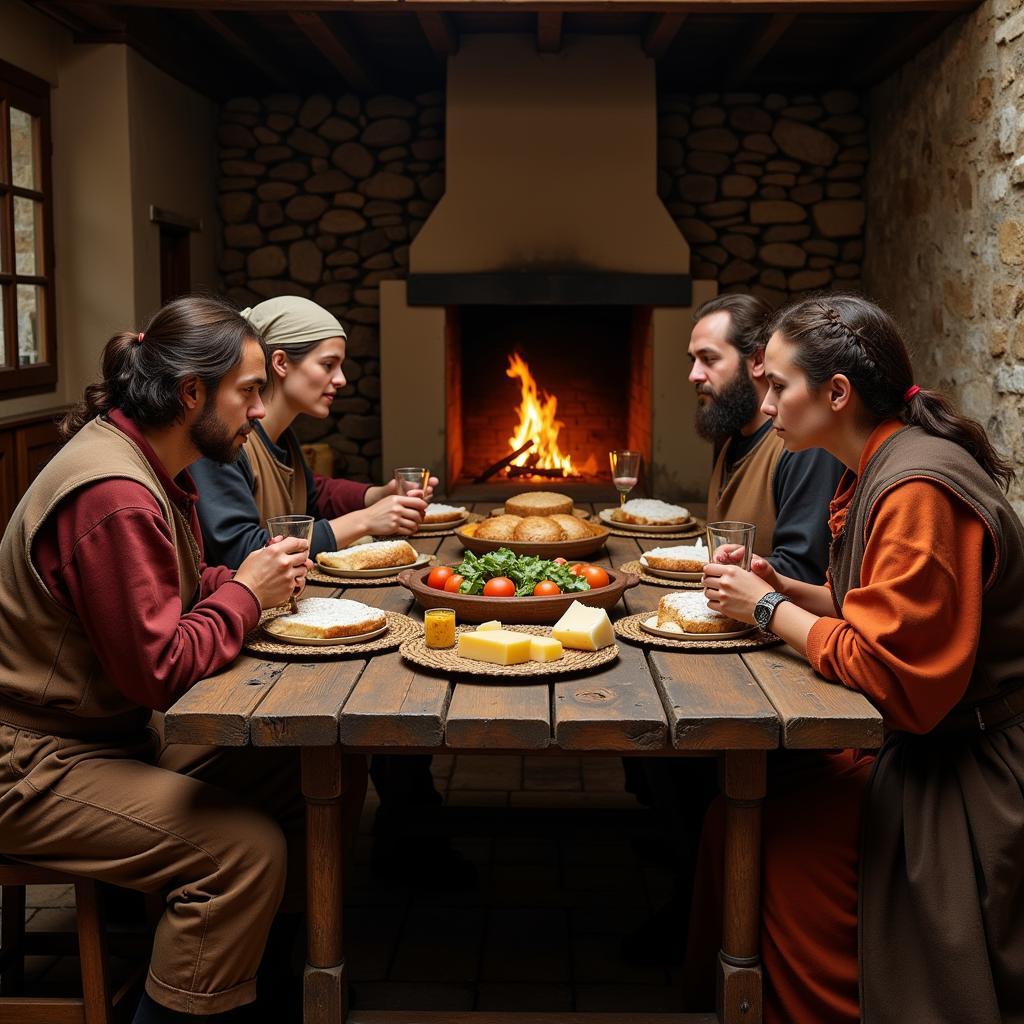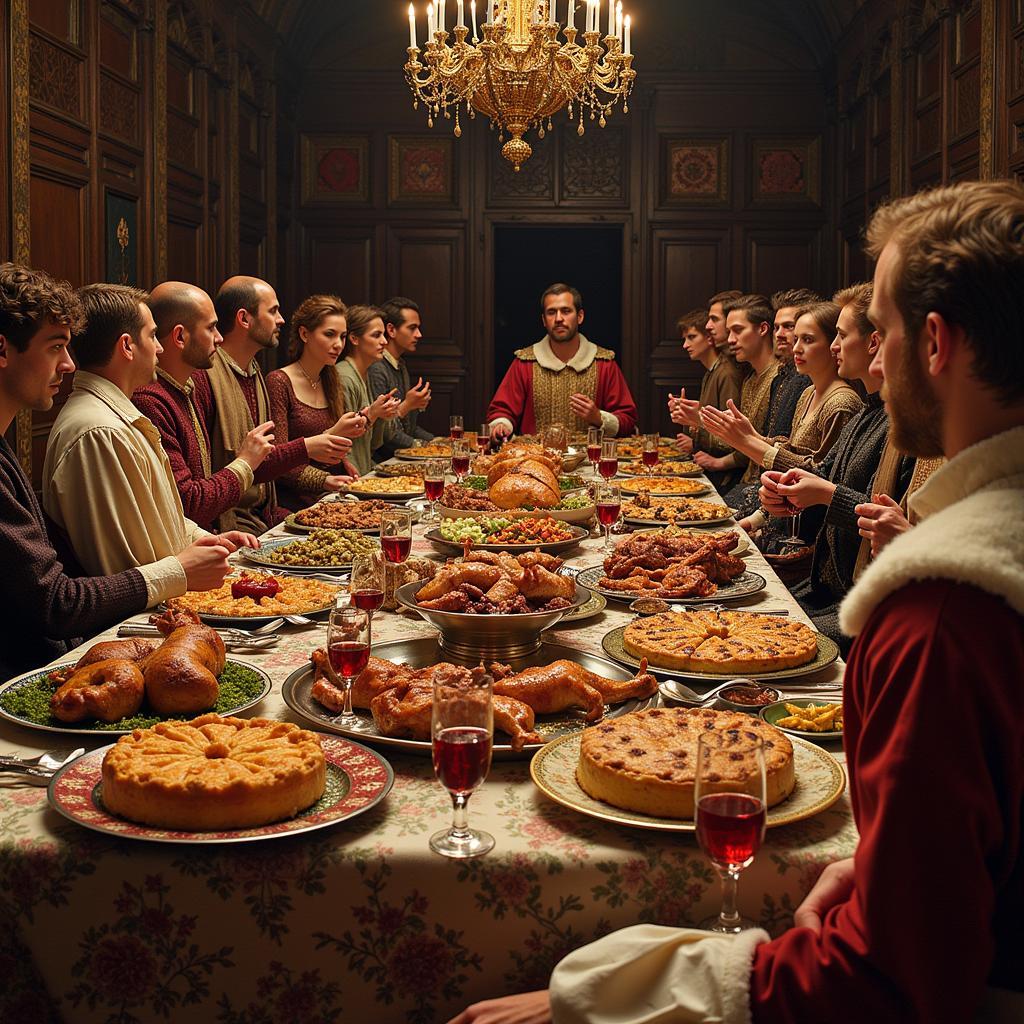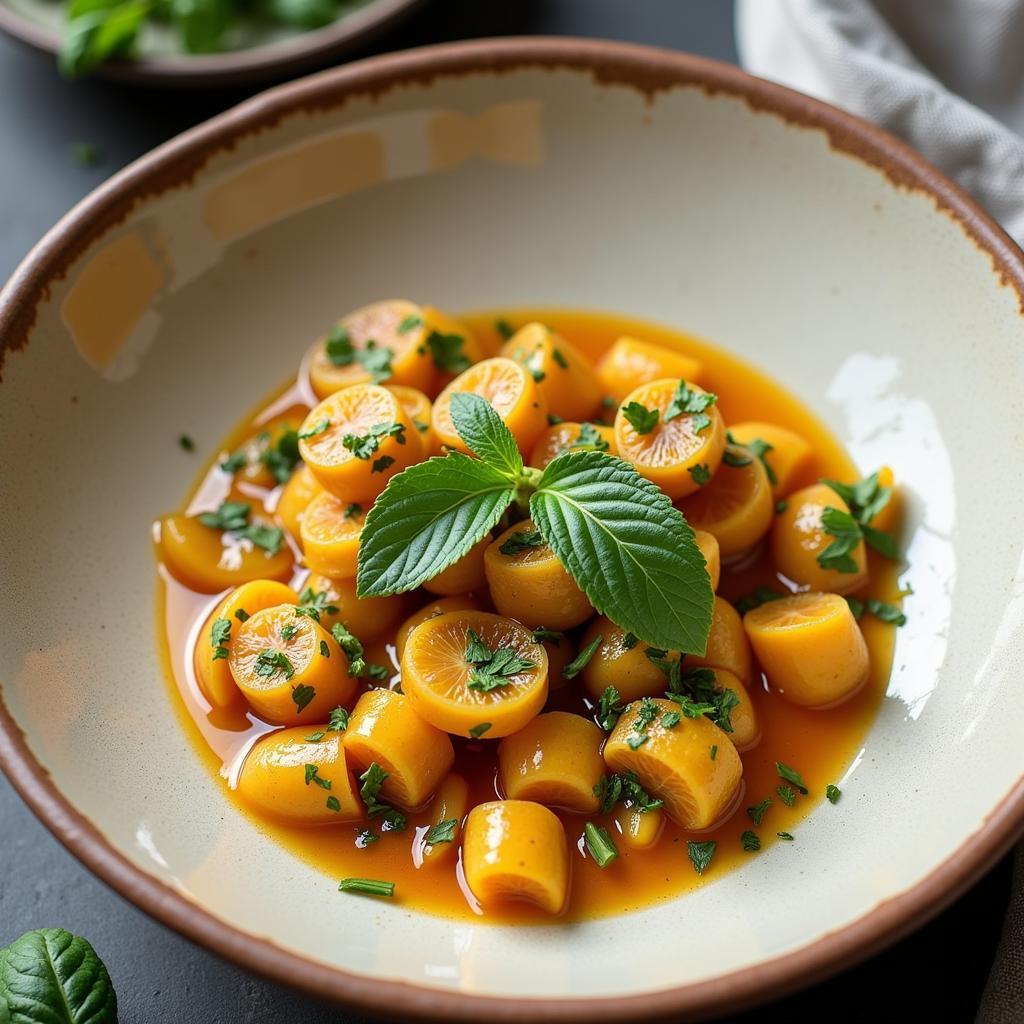Step back in time and discover the fascinating world of Medieval Times Food Recipes. From rustic peasant fare to elaborate royal banquets, this culinary journey explores the flavors, ingredients, and traditions that defined the medieval table. We’ll uncover the secrets of medieval cooking and transport you to a time of feasts and festivities.
Uncovering the Secrets of Medieval Cuisine
Medieval cuisine was a fascinating blend of practicality, resourcefulness, and emerging culinary artistry. Contrary to popular belief, medieval food wasn’t just bland and monotonous. Spices, though expensive, were highly valued and used strategically to enhance flavor and preserve food. Imagine the aroma of cinnamon, cloves, and ginger wafting through castle kitchens! Meat, primarily game and poultry, played a significant role in the diets of the wealthy, while the common folk relied on grains, vegetables, and legumes. Preservation techniques, such as salting, smoking, and pickling, were essential for keeping food edible throughout the year. These methods, though simple, created unique flavors that characterized medieval dishes.
Let’s explore the distinct characteristics of medieval food and discover what made it so unique. Social status played a significant role in dictating the variety and opulence of the food consumed. While peasants enjoyed simple pottages and bread, the nobility indulged in elaborate feasts featuring multiple courses and exotic ingredients. Religious practices, like fasting during Lent, also influenced food choices and preparation methods. Seasonal availability of ingredients dictated the menu, fostering a deep connection between the medieval kitchen and the natural world.
 Medieval Peasants Enjoying a Simple Meal
Medieval Peasants Enjoying a Simple Meal
A Glimpse into Medieval Feasts and Everyday Meals
What did people actually eat during medieval times? Royal feasts were grand affairs, showcasing the wealth and power of the host. Imagine tables laden with roasted meats, elaborate pies, and spiced wines. These feasts were not just about food; they were theatrical displays of social status and political influence. In contrast, everyday meals for the common people were much simpler. Pottages, thick soups made with grains and vegetables, were a staple, providing sustenance and warmth. Bread, often made from rye or barley, was another essential element of the peasant diet.
What are some examples of medieval recipes? One popular dish was “gyngerbrede,” a spiced honey cake flavored with ginger and other warming spices. Another favorite was “mortrew,” a chicken and almond milk stew thickened with bread crumbs. These dishes offer a glimpse into the flavors and textures that tantalized medieval palates.
 Medieval Royal Feast with Roasted Meats and Spiced Wine
Medieval Royal Feast with Roasted Meats and Spiced Wine
Recreating the Flavors of the Past: Medieval Times Food Recipes for Today
Interested in trying your hand at medieval cooking? Many medieval times food recipes can be adapted for the modern kitchen. While some ingredients may be harder to find, substitutions can be made without sacrificing the essence of the dish. For instance, readily available spices can replace more exotic ones, and modern cooking methods can simplify some of the more labor-intensive medieval techniques. Exploring these adapted recipes allows us to connect with the past and experience the flavors enjoyed by our ancestors.
How can I adapt medieval recipes for modern cooking?
By understanding the core ingredients and techniques of medieval cooking, you can easily adapt recipes for the modern kitchen. Substituting readily available ingredients for more obscure ones and utilizing modern appliances can simplify the process without compromising the authenticity of the dish.
What are some common ingredients used in medieval cooking?
Common ingredients included grains like barley and rye, legumes such as peas and beans, vegetables like cabbage and turnips, and spices such as ginger, cinnamon, and cloves. Meat, primarily game and poultry, was a staple in the diets of the wealthier classes.
 Modern Adaptation of a Medieval Mortrew Recipe
Modern Adaptation of a Medieval Mortrew Recipe
A Culinary Journey Through Time
Medieval times food recipes offer a unique window into the past. From simple peasant fare to elaborate royal feasts, these dishes tell stories of resourcefulness, tradition, and culinary innovation. Exploring medieval cuisine allows us to appreciate the ingenuity of our ancestors and connect with a rich culinary heritage. So, embark on this culinary adventure and savor the flavors of history!
Sir Reginald Bartholomew, a renowned medieval food historian, shares his insights: “Medieval cuisine was more than just sustenance; it was a reflection of the social, religious, and economic landscape of the time. Exploring these recipes offers a fascinating glimpse into the lives of our ancestors.”
Lady Annelise of York, a culinary expert specializing in medieval cuisine, adds, “Adapting medieval recipes for the modern kitchen is a rewarding experience. It allows us to connect with the past and appreciate the ingenuity of medieval cooks.”
Frequently Asked Questions about Medieval Food
- What did peasants eat in medieval times? Primarily pottages, bread, vegetables, and occasionally meat.
- What were common spices used in medieval cooking? Ginger, cinnamon, cloves, mace, and saffron.
- What was a typical medieval feast like? Multiple courses featuring roasted meats, game, pies, and spiced wines.
- Were desserts common in medieval times? Yes, fruits, honey-based treats, and spiced cakes were popular.
- How did people preserve food in the medieval era? Salting, smoking, drying, and pickling were common methods.
- What is a good starting point for exploring medieval recipes? Try adapting simple recipes like pottage or gyngerbrede.
- Where can I find more information about food from fairy tales? You can explore more about food from fairy tales at food from fairy tales.
Medieval Feasting: A Glimpse into the Past
Want to explore other captivating culinary traditions? Delve into the magical world of food from fairy tales and discover the enchanting dishes that have graced the pages of classic stories.
For further assistance, please contact us at Phone Number: 02437655121, Email: [email protected] Or visit us at: 3PGH+8R9, ĐT70A, thôn Trung, Bắc Từ Liêm, Hà Nội, Việt Nam. We have a 24/7 customer service team.